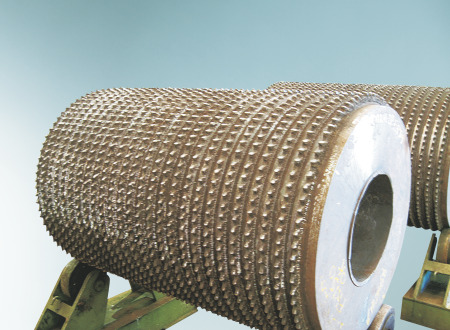In the sunny countries that have the right climate to grow sugar cane such as Brazil, Colombia, South Africa, India, China, Cuba and Australia, the sugar industry is significant factor in their economies.
Outstanding Protection of Sugar Cane Processing Equipment
Most countries have one campaign (harvest) per year, but some have climate so conducive to growth in certain regions that two campaigns are possible. After harvest, the sugar cane is transported to the sugar mills where it is processed to sugar. In this process, the sugar cane is fed into the sugar mill, where it is first crushed and then ground through three to four huge sets of triple rolls, the milling train, crushing and extracting the brown, liquid juice of the cane, which forms the basis of the sugar. After the treatment of the juice follows the cleaning, drying and crushing to a small grain size. After that the brown sugar is ready. The brown sugar can also be processed into white sugar, which is preferred in some regions of the world.
The rest of the sugar cane, the bagasse, is used in a burner to produce steam for a generator to produce electricity. The most important part in the process is the grinding plant with its crusher rolls, because the more efficiently it works, the more juice is extracted and is the more money can be made from it.
The crusher rolls can be about 2 m long and have triangular superstructures on the outer surface, with the triangles being about 50-60 mm wide, interlocking similar to gear wheels. These rolls have to be strong enough not to bend under pressure and lose efficiency, but the surface is most important, which is why it needs to be hardfaced. This hardfacing of the tips is done with stick electrodes while the pressing process is in progress. The hardfacing is applied to the tips and flanks of the roller grooves. This hardfacing process of roller shell is known as roller arcing, which creates discrete globules of carbide beads on the apex and halfway up the flank of the tooth profile. This is done to improve the juice extraction efficiency and to maintain throughput by providing a surface sufficiently rough to prevent slippage of the shredded cane as it is pulled into the nip area between the counter-rotating mill rollers.

Another important part of the welding activities in sugar mills are the shredders at the beginning of the process as the sugar cane comes directly from the field. The sugar cane contains a lot of sand, which in addition to the toughness of the sugar cane itself, adds another abrasive effect to the shredding equipment. For this reason, the hammers and the knives are protected with hardfacing welding consumables. Other typical wear parts in these sugar mills are: trash plates, grippers, crown wheels and bearings of the crusher roll, etc.
Wear protection with UTP welding consumables has been present in the sugar and ethanol industries since the 1970s, participating in the development of products that meet the increasing technical demands and productivity of plants. Throughout the years, we have gained considerable knowledge in the production and supply of welding consumables tailor-made to the specific needs and applications in this industry.
Wear leads to losses in production efficiency and a reduction in the quality and service life of the machines and tools. It also leads to an increase in maintenance costs for the entire production equipment. UTP offers a total package of high-quality wear protection welding consumables for maintenance and repair that help optimize the productivity of the steel mill and the steel producing industry.
We provide first-class products for maintenance and repair, cladding and metallization; including alloys of complex carbides and with specific hardness that meet the most diverse wear resistance requirements in this industry segment.


